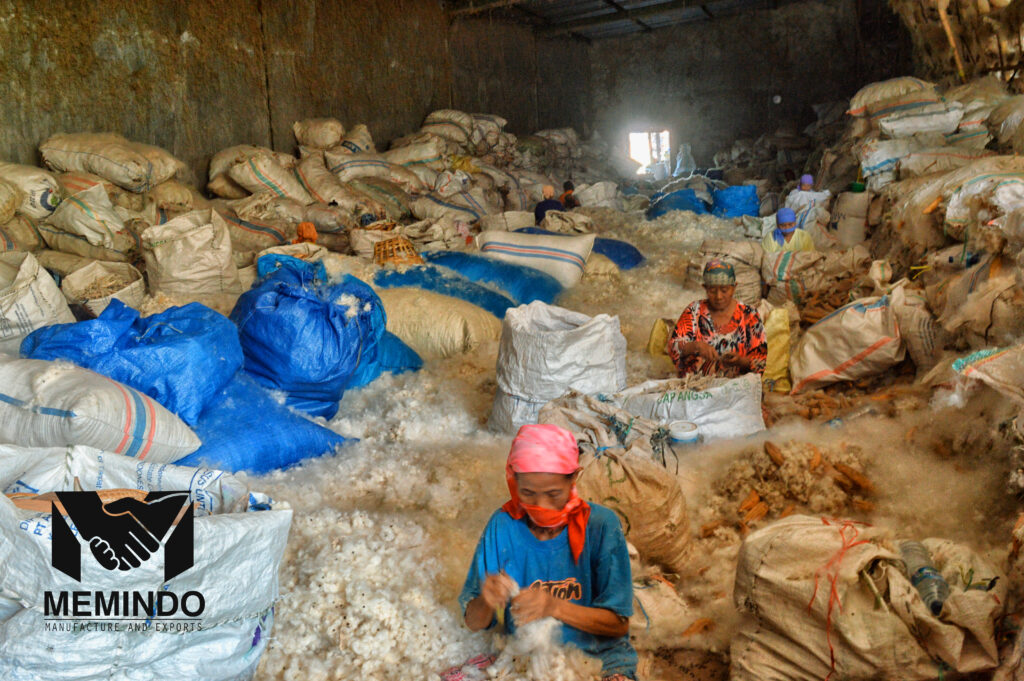The Untapped Potential of Kapok Exports: A Sustainable Treasure from the Tropics
In the quest for sustainable, eco-friendly alternatives in global trade, one humble natural fiber is quietly making waves: kapok. Known for its unique properties and versatility, kapok is poised to become a rising star in the international market. Derived from the seed pods of the kapok tree (Ceiba pentandra), this lightweight, silky fiber is not only environmentally friendly but also offers numerous commercial applications. As interest in sustainable products grows, the kapok trade, especially exports from tropical regions, is gaining attention.
What is Kapok?
Kapok, often called “silk cotton,” is a natural fiber that comes from the large, pod-like fruit of the kapok tree, which grows abundantly in tropical climates. These towering trees are commonly found across Southeast Asia, Central America, and Africa. The kapok fibers inside the pods are light, fluffy, and buoyant, making them ideal for a wide range of uses. In many ways, kapok is a renewable resource that requires little intervention from humans, as the trees flourish naturally in the wild.
Why Kapok Matters
As industries worldwide search for sustainable alternatives to synthetic materials, kapok stands out for several reasons:
- Eco-Friendly and Sustainable: Unlike synthetic fibers or down, kapok does not require harmful chemicals or intensive water usage for processing. The trees themselves do not need fertilizers, making them low-maintenance and environmentally friendly. The harvesting process is also gentle on the ecosystem, leaving the trees intact for continuous production year after year.
- Biodegradable and Hypoallergenic: Kapok is fully biodegradable and poses no threat to the environment when discarded. Moreover, the fibers are naturally hypoallergenic, which makes kapok an excellent alternative for people with sensitivities to other natural materials like wool or feathers.
- Versatile Applications: Traditionally used as stuffing for mattresses, pillows, and cushions, kapok is finding new uses in a variety of industries. Its buoyancy has made it popular in life jackets and flotation devices, while its insulation properties are utilized in eco-friendly packaging, apparel, and even furniture.

The Growing Global Market
Historically, kapok was used primarily in local markets, with countries like Indonesia, Thailand, and the Philippines being major producers. However, as the world shifts toward greener products, international demand is rising, creating new opportunities for exports. The eco-conscious consumer market, particularly in Europe and North America, is increasingly attracted to sustainable products like kapok, driving its popularity.
In recent years, there has been a resurgence in kapok exports, especially to countries looking to reduce their reliance on non-renewable resources. For example, many manufacturers in the bedding industry are turning to kapok as a natural alternative to synthetic stuffing materials. Similarly, fashion brands focused on sustainability are using kapok for insulated clothing and outerwear, recognizing its ability to provide warmth without the weight and environmental cost associated with down.
Challenges in the Kapok Industry
Despite its numerous advantages, the kapok trade faces some challenges. One of the main obstacles is the fiber’s shortage of supply chains and modern processing technology. Harvesting and processing kapok can be labor-intensive, and improving these processes will be key to scaling up production to meet growing demand.
Additionally, there is a need to raise awareness about the benefits of kapok among consumers and industries. Many potential buyers are still unfamiliar with its properties, and overcoming this information gap is critical for expanding the market.
The Future of Kapok Exports
The future looks bright for kapok as more industries recognize its potential. Investment in better farming and processing technologies will help streamline production and make kapok more competitive on a global scale. Furthermore, as environmental regulations tighten and companies commit to sustainable sourcing, kapok’s role as a viable alternative to synthetic fibers and unsustainable natural products will grow.
Countries with abundant kapok resources are now at a pivotal moment. By focusing on improving infrastructure, refining export strategies, and enhancing global marketing efforts, they could transform kapok into a major export commodity. With the right initiatives, the kapok industry could experience a significant boost, benefiting both local economies and the environment.
Conclusion
Kapok may still be under the radar for many, but its potential as a sustainable, versatile resource is undeniable. As eco-consciousness continues to shape global markets, kapok could become a key player in industries ranging from fashion to furniture, offering a natural, biodegradable alternative to less sustainable materials. For exporters in tropical regions, kapok is more than just a fiber—it’s a green goldmine waiting to be fully tapped. The future of this natural treasure lies in our hands, ready to reshape how we think about sustainability and trade.

